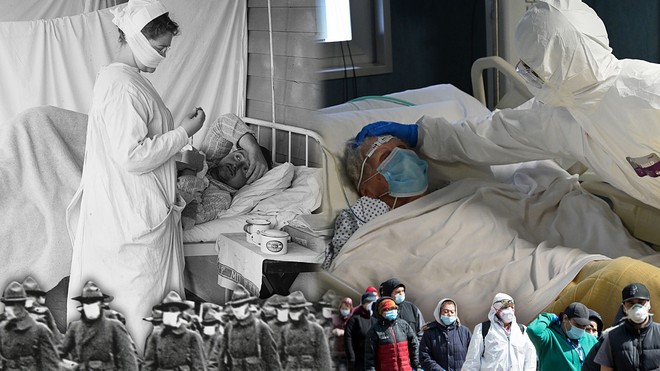By Natalie Taylor
If anyone who had lived through the 1918 Spanish flu were alive today, they might recognize a lot of similarities with the current pandemic. Both deadly diseases moved from major metropolitan centers and spread to rural areas. Both viruses are RNA-based and can adapt and change quickly, both are transmitted via droplets and can lead to respiratory failure. One major difference between the two pandemics is the population groups affected. In 1918, young people between 20 and 40 died most frequently; in 2020, it’s the elderly population that is most at risk.
The 1918 pandemic claimed 10 times more lives than WWI; half of U.S. soldiers who died in Europe fell to the virus, not to the enemy. With one-fifth of the world infected, it was impossible to hide from the sickness, and while the COVID-19 pandemic is not over, we are showing significantly lower death rates, most likely due to better understanding of viruses and better healthcare. Although hospitals are badly stressed in many countries, in 1918 there were similar challenges. Health workers then dealt with mass war injuries and many facilities were understaffed because physicians were with the troops. We think the 2020 world is dramatically more connected than in the past, but soldier mobilization during WWI created an arena for virus dispersal. Thousands of young men left their homes and gathered in military training camps, then on ships, and finally mingled with others in theaters-of-war abroad. When the war ended, they passed through major hubs on their way back home. The second deadly influenza wave in autumn came through rail and sea routes, then wreaked global havoc on previously unexposed populations. Total deaths around the world between 1918-20 are estimated at 50 million, with 675,000 in the U.S. alone.
Spanish flu is a misnomer based on the belief that it began in Spain, where the earliest cases were reported. But historians think wartime censorship may have caused this incorrect shifting of blame. Because Spain remained neutral during WWI, it reported honestly about its cases but countries, fighting the war, suppressed their data to boost national morale and to avoid appearing weakened before the enemy.
Another link between the two pandemics is their effects on two different social groups—the poor and the wealthy. Pandemics exacerbate health disparities, and this was clear in 1918 when those living in large homes had up to 56% lower mortality rates than those living in crowded or multi-generational households. It’s clearly evident today as well—poverty, crowding, and underlying illnesses, all increase the risk of both infection and death from Covid-19.
We know that the 1918 pandemic ebbed and then ended. Experts think that we may also experience a long plateau with fewer infections and periodic local flares until we gain herd immunity. This could be accelerated with vaccination, but unfortunately, this process may take years rather than months.

